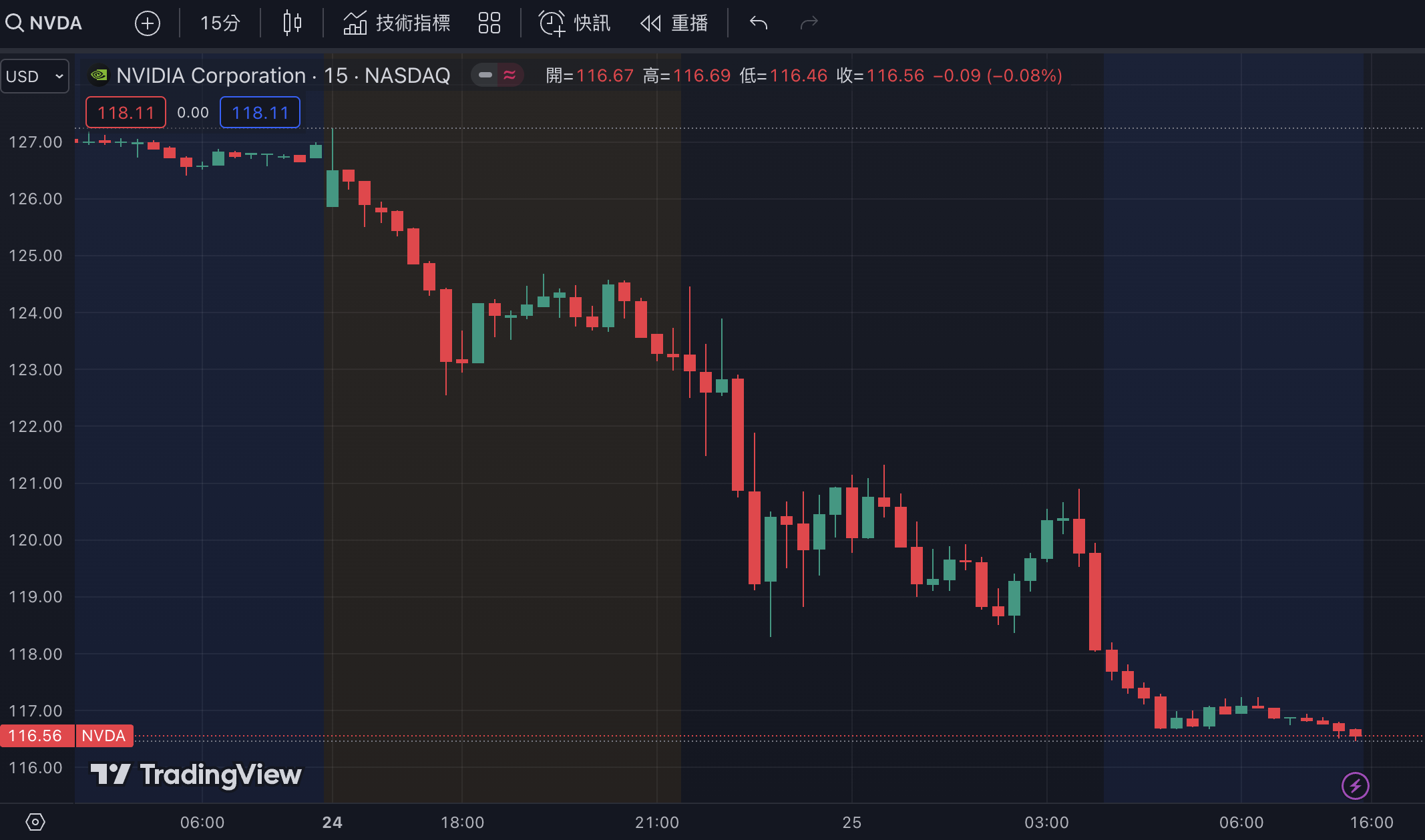Amid the AI craze, NVIDIA, the AI chip giant led by Huang Renxun, hit a new high of $140.76 on the 20th last week, once replacing Microsoft as the company with the largest market capitalization in the US stock market.
However, NVIDIA quickly retreated after reaching a new high, closing with a drop of 3.54% that day. Yesterday (24th), it fell 6.68% to close at US$118.11. It has fallen by 13% in the past three trading days, and its total market value has evaporated by approximately US$430 billion. The current market value has dropped to US$2.91 trillion, setting the largest decline in market value for a single company within 3 days.

Dragging down semiconductor stocks
Dragged down by Huida, the Philadelphia Semiconductor Index fell 3%, with 29 of the 30 constituent stocks falling. TSMC ADR fell 3.5%, while Broadcom, Marvell and Qualcomm fell 4% to 5.7% respectively. The performance of the other three major U.S. stock indexes is as follows:
- The S&P 500 index fell 15.75 points, or 0.3%, to close at 5,447.87 points;
- The Nasdaq Composite Index fell 192.54 points, or 1.1%, to close at 17,496.82 points;
- The Dow Jones Industrial Average rose 260.88 points, or 0.7%, to close at 39,411.21 points (rising for five consecutive days).
The Dow Jones Industrial Average's rise, unlike other indexes, shows that investors' enthusiasm for AI seems to be turning their attention to other stocks. Stocks outside of technology stocks were also generally higher, with nine of the 11 S&P 500 sectors ending in the green.
Analyst: Huida will enter consolidation
Faced with Huida's retracement, analysts pointed out that Huida's recent trading has shown a bearish pattern. Katie Nixon, chief investment officer of Northern Trust Wealth Management, said:
After an extreme price surge, the stock may hit speed bumps in the future, not because of concerns about the AI giant's fundamentals, but because the stock has risen too high, too fast, making the market even more volatile. cautious.
The Wall Street Journal also pointed out that Huida accounted for one-third of the increase in the S&P 500 Index in June before the retracement on the 20th, and accounted for 44% of the increase since the beginning of 2022. This means that the performance of the entire S&P 500 is almost entirely due to Nvidia alone. Neville Javeri, Portfolio Manager at Allspring Global Investments, commented:
In the short term, investors may begin to experience AI fatigue or become more concerned about index concentration.
Still optimistic about the long term
However, Ari Wald, director of technical analysis at Oppenheimer, believes that the long-term trend is more important for Huida than any specific level, and Huida is still trading above the 50-day moving average of about $101, which is also maintained. Above the 100-day moving average of $92, the stock remains strong.
In addition, analysts do not believe that this will fully drag down market performance. Carl Ludwigson, Managing Director of Bel Air Investment Advisors said:
With the exception of NVIDIA and other chip stocks, the rest of the market was positive on expectations that the economy is still in a base-case scenario for a soft landing.
Jack Janasiewicz, chief strategist at Fasheng Investment Management, said: "The market is selling some stocks that have risen before and buying some stocks that have lagged. This is a wait-and-see before the inflation data will be released on Friday, and the data is expected to be quite weak. .





